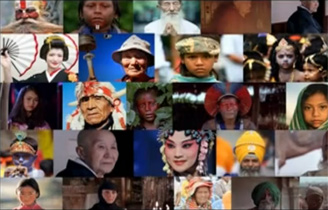The 9th session of the CRIHAP Governing Board kicks off in Beijing
Although the ICH safeguarding in many countries in the Asia-Pacific region has started with a prototyped system, people’s awareness of the safeguarding in these places still needs to be improved. Low income still remains a concern for ICH practitioners and community participants. The country’s human and financial resources for the ICH safeguarding are still scarce. Legislation and community-level ICH data collection, documentation, and digitalized safeguarding are still weak. Some countries also face problems such as political instability, personnel flow, national cultural identity, inadequate cooperation between the government and NGOs, scarcity of raw materials that traditional skills rely heavily on, and intergenerational inheritance. In other words, under the influence of multiple factors such as politics, economy, and society, the ICH safeguarding process of Member States is still facing many challenges.
With the continuous development and expansion of business, the visibility and influence of CRIHAP in the region is increasing, and countries are generally looking forward to continuing to work with CRIHAP in the field of intangible cultural heritage capacity building, intangible cultural heritage and education, and the training of intangible cultural heritage trainers.
Some countries also presented clear training thematic needs to the CRIHAP, such as "Intangible Cultural Heritage and Sustainable Development", "Intangible Cultural Heritage in an Emergency", "Intangible Cultural Heritage and Media", "Intangible Cultural Heritage and Youth", "Intangible Cultural Heritage Safeguarding Policy Development", "Intangible Cultural Heritage and Gender", "National Periodic Report Writing", "Intangible Cultural Heritage and Disaster Prevention and Reduction", "Intangible Cultural Heritage and Non-Governmental Organizations", "Intangible Cultural Heritage International Assistance", and " Intangible Cultural Heritage and Higher Education ".
To meet the growing needs of countries in the Asia-Pacific region on intangible cultural heritage safeguarding capacity building, in 2020, CRIHAP will continue to intensively work in countries that have already held training, and further expand the "training territory" to other countries to conduct rich intangible cultural heritage-themed training activities.
At present, CRIHAP is actively collecting dynamic information on the safeguarding of intangible cultural heritage in the Asia-Pacific region and at the global level by actively building a database of experts, trainees and trainers, collecting relevant information and participating in seminars at national, regional and international levels. To further improve the training model and content, it will support training target countries to carry out follow-up intangible cultural heritage safeguarding and research activities through training assessment and publication of training results documents. In 2019, the center’s Chinese and English newsletter have been completely revised.
The Governing Board highly appraised the work of CRIHAP and said it believed that CRIHAP could actively carry out intangible cultural heritage capacity-building training activities in accordance with the spirit of the Convention for the Safeguarding of the Intangible Cultural Heritage. The intangible cultural heritage safeguarding work provides intellectual support and technical assistance, which greatly promotes the development of intangible cultural heritage safeguarding work at the national and regional levels, and assists and advances UNESCO’s intangible cultural heritage capacity-building strategy in global implementation.
As one of the seven UNESCO's Category-2 centers in the field of intangible cultural heritage, CRIHAP, since its establishment, has been committed to providing the 48 member states in the Asia-Pacific region with the capacity-building training services on intangible cultural heritage under the framework of the Convention. Up to December 2019, CRIHAP has held 46 intangible cultural heritage capacity-building trainings for the Asia-Pacific region, with 40 beneficiary countries.
For eight years, CRIHAP has carried out continuous and effective training activities themed "ratification", "implementation", "community-based inventories", "safeguarding plan development" and "program application preparations" in East Asia, South Asia, Southeast Asia, Northeast Asia, Central Asia, and the Pacific.
Through the training from UNESCO facilitators on key concepts of the Convention, the complexity of inventory development and the important role of the "community" among them, CRIHAP conveyed the concepts and methods of intangible cultural heritage safeguarding to cultural affairs officials, community representatives, intangible cultural heritage practitioners, experts and scholars and other groups. The trainings let "on-site students" pass on what they learned through follow-up training and activities.
After the ninth session of the Governing Board, some delegates went to Chinese designer Chu Yan’s studio Chu He Ting Xiang, to carry out investigation and research activities on Chinese traditional costumes.
Address: 81, Laiguangying West Road, Chaoyang District, Beijing, China
Zip Code: 100021
Tel: 86-10-64966526
Fax: 86-10-64969281
E-mail: administration@crihap.cn
NEWSLETTER
Leave us your e-mail address, we'll let you know about current events.


